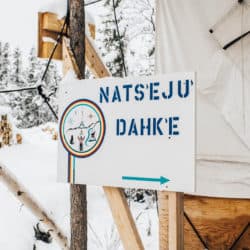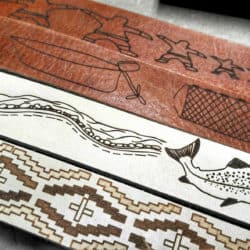On March 4, the Arctic Inspiration Prize celebrated 10 years of “By the North, for the North” at its annual awards ceremony. In our final AIP laureate profile, we highlight a project in which Nunavut youth learn the traditional skill of qajaqing.
In the early 2000s, Nunavut high school teacher Glen Brocklebank had a chance encounter with a woman from Baker Lake, an inland hamlet 300 kilometres from his home in Chesterfield Inlet. The woman reminisced about how qajaqs (aka kayaks) had once been a common form of watercraft in her community. Over a period of about 70 years, however, they had fallen out of use. Sometime after that meeting, while at a teachers’ conference, Brocklebank came across a book published in Greenland on how to make a qajaq. The seed of an idea was sown.
In 2004, Brocklebank and his wife, Ana Leishman (also a teacher), enlisted the help of Joe Issaluk, an Inuit Elder in the community, to make a qajaq from scratch using traditional methods. The exercise was successful, and the qajaq was hung in one of the classrooms at Victor Sammurtok School. When students saw it, they were intrigued – and wanted to know when they could build one, too.
Brocklebank took the idea to the people of Chesterfield Inlet. The community wanted to support the students’ interest and enthusiasm – but they needed money to make the project a reality. A successful proposal to the Government of Nunavut netted $8,500 to kickstart the initiative, and Brocklebank and his team of Inuit youth built nine qajaqs in 10 days.
It was important that the qajaqs not simply become artifacts, however, to be put on display and passively observed; the team wanted to be able to use them on the water. That meant finding suitable accessories, so they approached a couple of Canadian companies: BARE provided some much-needed gear for cold water, including dry suits, and Aqua Bound donated 30 paddles. Now properly equipped, they were able to launch the qajaq program.
Two essential elements of the program were swimming and water safety skills, including a wet exit and self-rescue, taught on the relative calm of nearby Police Lake. While many community members were used to being in boats on the water, they weren’t necessarily skilled swimmers. For many, it was a new experience to take that next step.
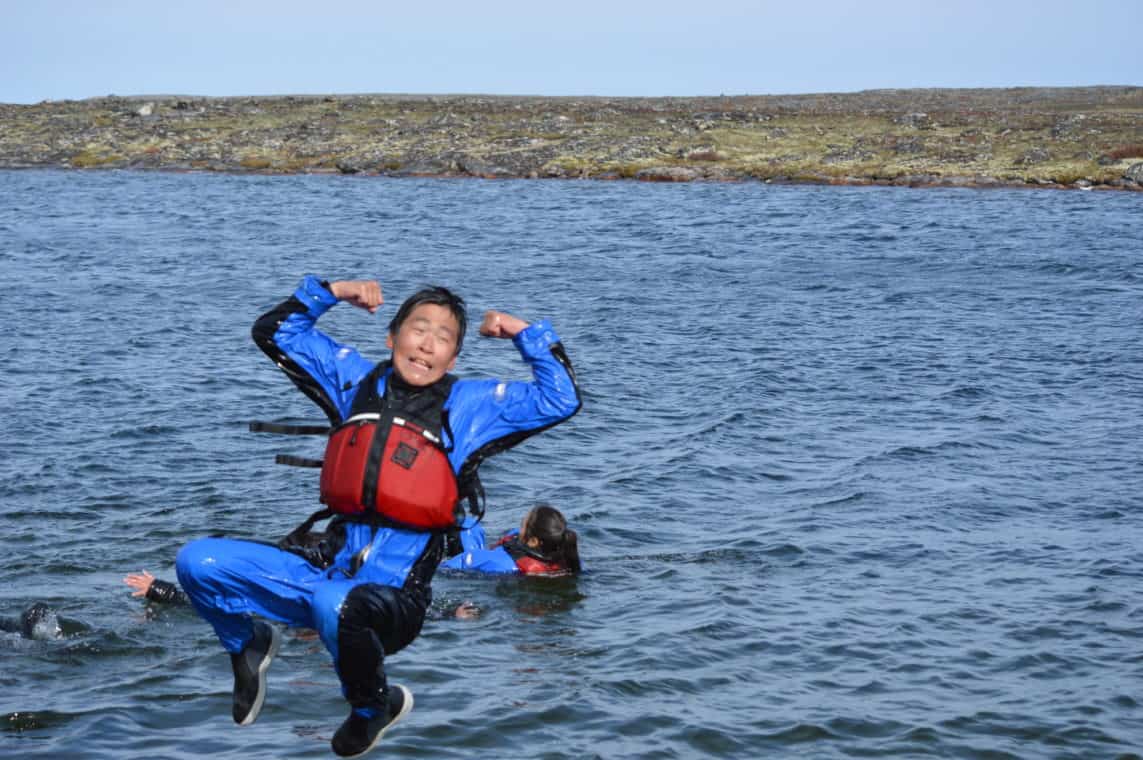
One program participant in the early years was Douglas Aggark. When he was in high school, he recalls, he had never been swimming and was afraid of the water. Learning to safely operate a qajaq in open water was “a big deal” – and it had a major impact on his life. Aggark also recalls the emotional experience of being part of the program. He notes that it was a great thing to be part of reviving the skill of qajaqing in his community; he “felt it in the heart.” Others who went through the program felt the same way, he says.
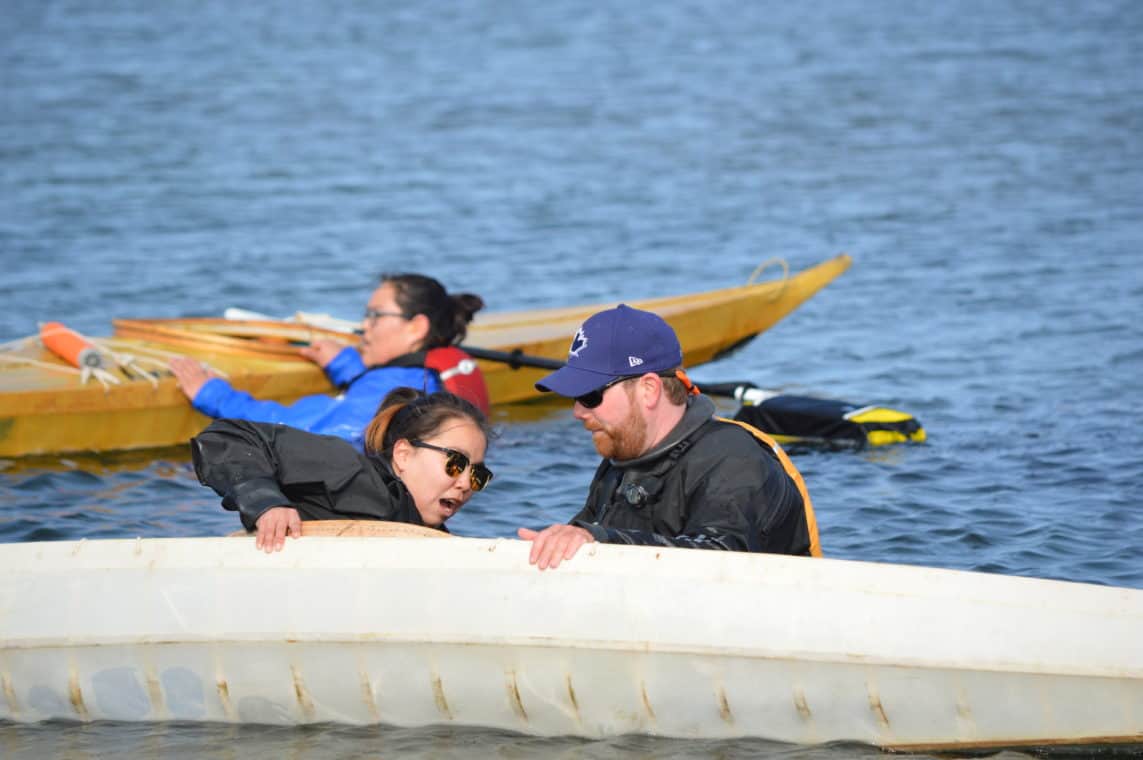
The program continued to grow, giving Chesterfield Inlet youth the opportunity to connect with local knowledge keepers and Elders. Many young people built their hand-crafted qajaqs using a design that was hundreds of years old. Over time, however, the qajaqs and the gear began to age and wear. Brocklebank and his team continued to look for funding and sponsorships to maintain the equipment, but some years the money just wasn’t there.
A brainstorming session brought community members together to talk about what was needed to reinvigorate the program. They looked at applying for the Arctic Inspiration Prize (AIP), which is awarded annually to multidisciplinary teams that are making a significant contribution to northern knowledge, and translating that knowledge into benefits for the North, its people, and Canada as a whole.
They were certain they could find between 30% and 35% of the funding they needed within the community – a key AIP eligibility requirement. It wasn’t hard to get students on board: they were all excited to continue the program. With this strong community backing, an application for the AIP was seen as a realistic option.
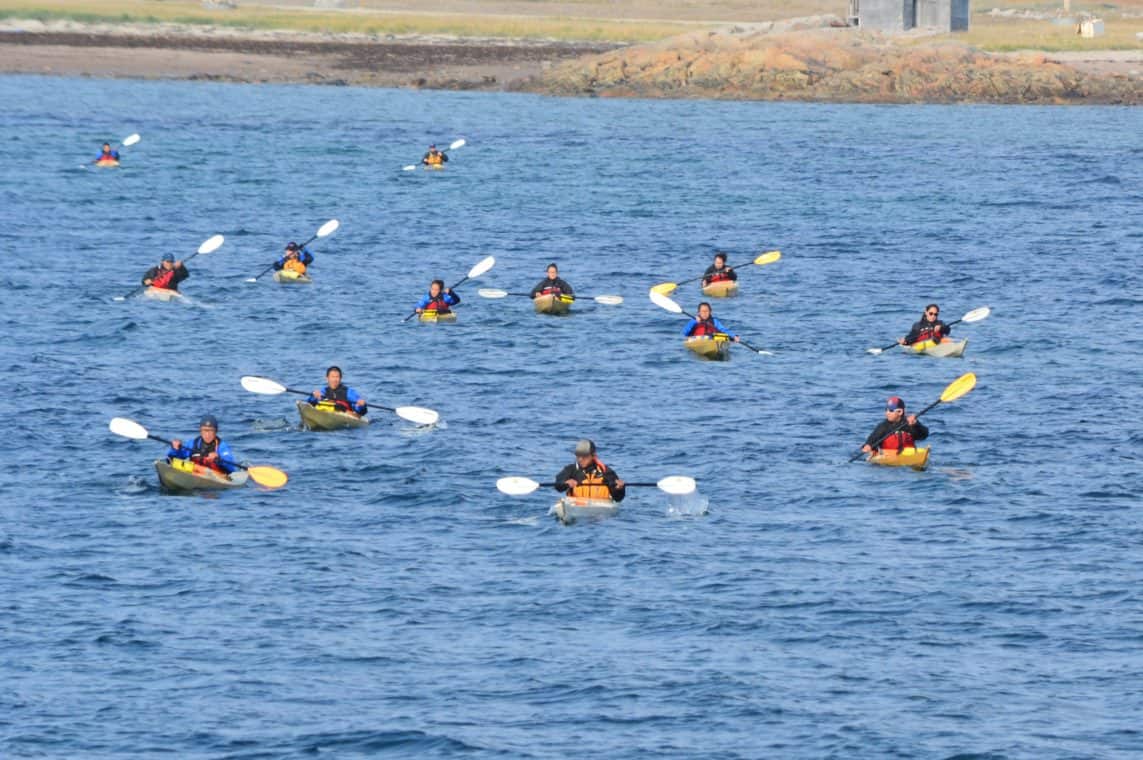
Douglas Aggark became a pivotal part of the application process. After leaving high school, he did not have anything to do with the program, he recalls. He had a job in the mines that took him out of town every two weeks, and it was hard to keep up with activities in his home town. But he believed in the project, knowing what a difference it had made for him and others in terms of physical and mental health. The impact on the community was significant; every school should have such a program, he felt. While he couldn’t be involved physically, he wanted to give back. In 2017, Aggark nominated the qajaq program to the AIP.
A strong application was assembled, and in 2017 the qajaq program was awarded $140,000 by the AIP. According to Brocklebank, this was more funding in one year than the program had received in the previous 14 years put together. Winning the award has provided the qajaq program with a sustainable foundation that will keep the project going for years to come.
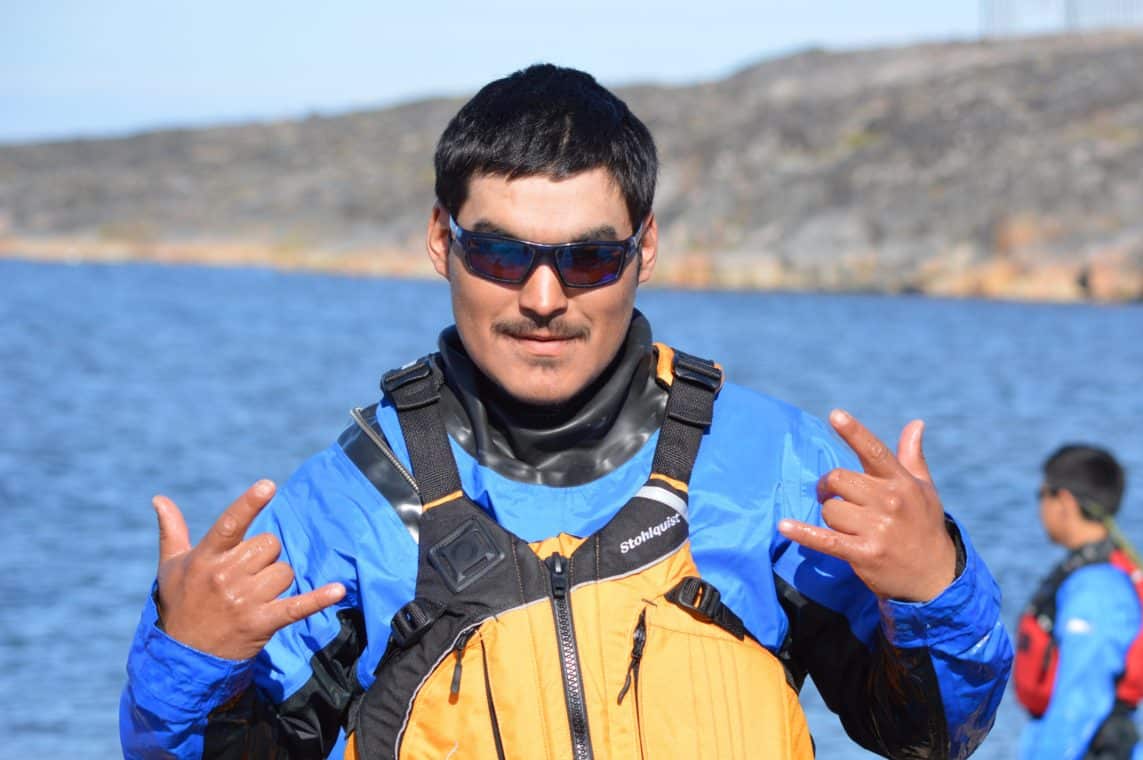
Participants in the program, which is open to students in grades 9 to 12, are required to have good attendance at school. In fact, Brocklebank says, attendance is almost perfect among those taking part. Younger students come out to watch the activities, which sets up future interest. “Kids love the whole initiative,” Brocklebank says, noting that they take it seriously and are proud of it.
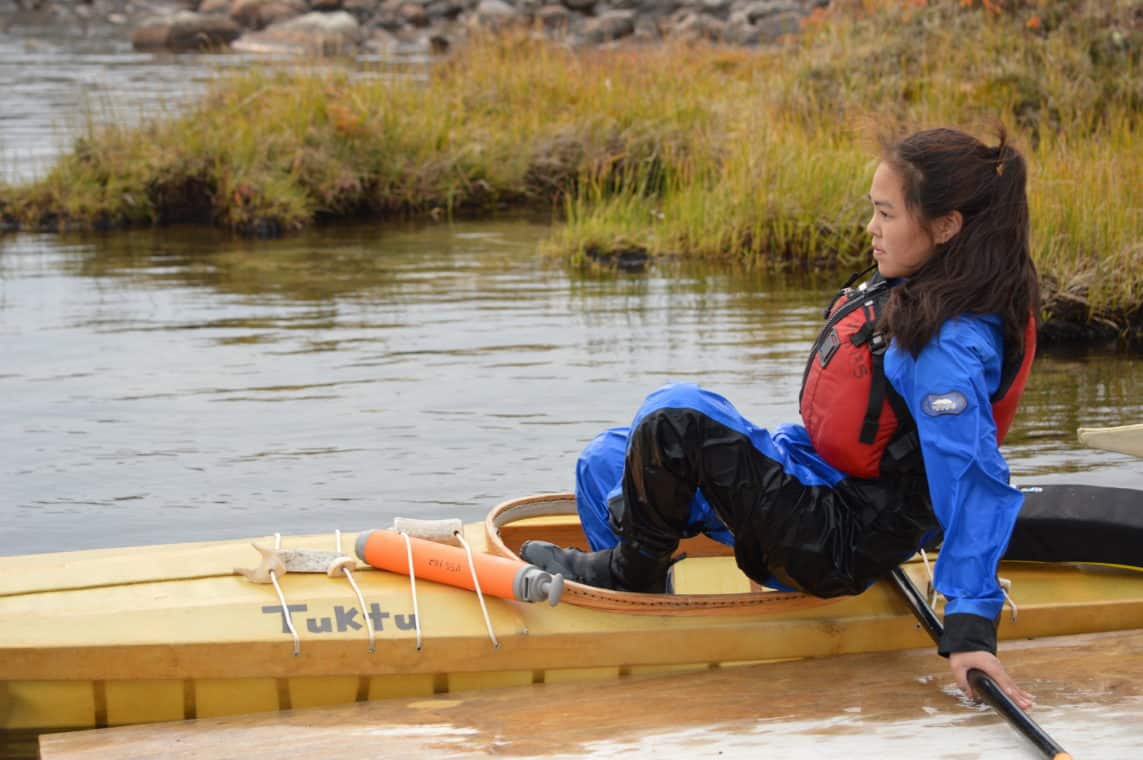
The benefits of the project are many. Young people are connected with Elders who share their traditional knowledge. Inuit youth learn new skills, both in building qajaqs and in using them for sport and hunting activities. Aggark says that before he took part, he was afraid of using power tools. But with the training provided by the program, he overcame his fear and learned how to use the tools, building his self-confidence at the same time.
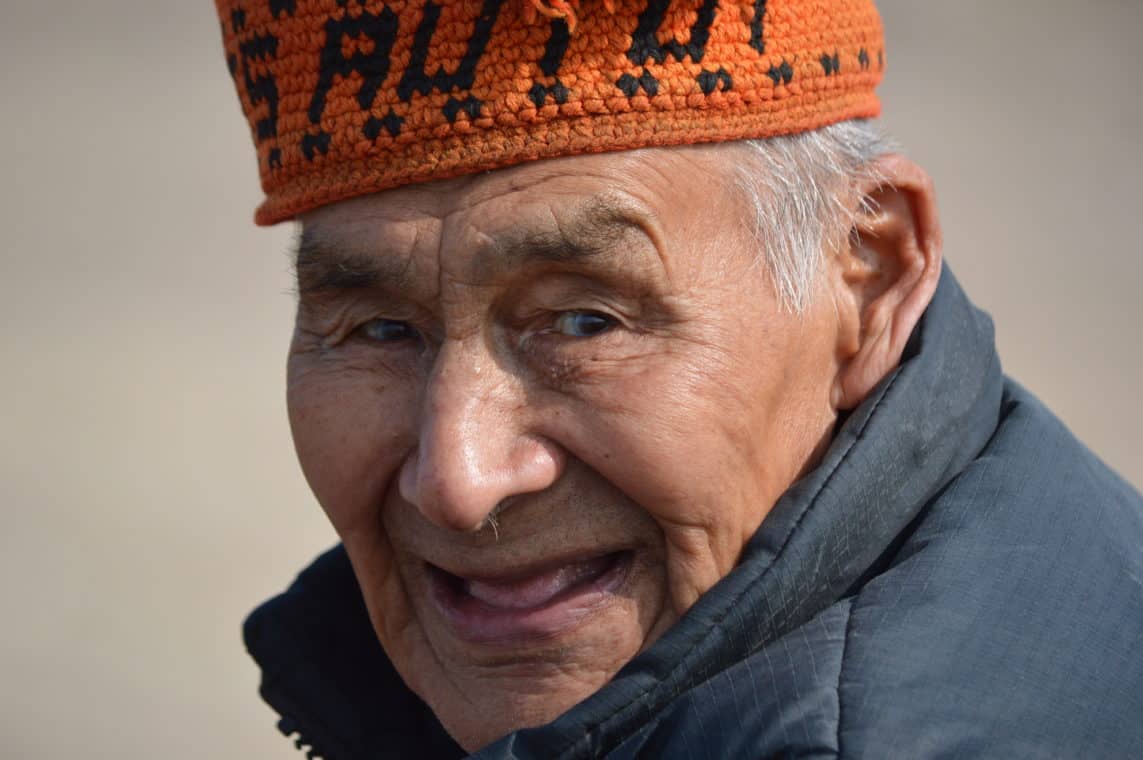
“The water safety skills they learn have proven invaluable, as the students learn not to be afraid of water,” says Brocklebank. “This is an important skill they can rely on throughout their lives.” He recounts the story of one grade 11 student who was involved in a boating accident in which his boat flipped over. “The student’s experience from the qajaq program meant that he was able to save himself from drowning – a life-changing moment.” Brocklebank has helped many students overcome fear of water or other anxieties by carefully coaching them through challenges faced during the program.
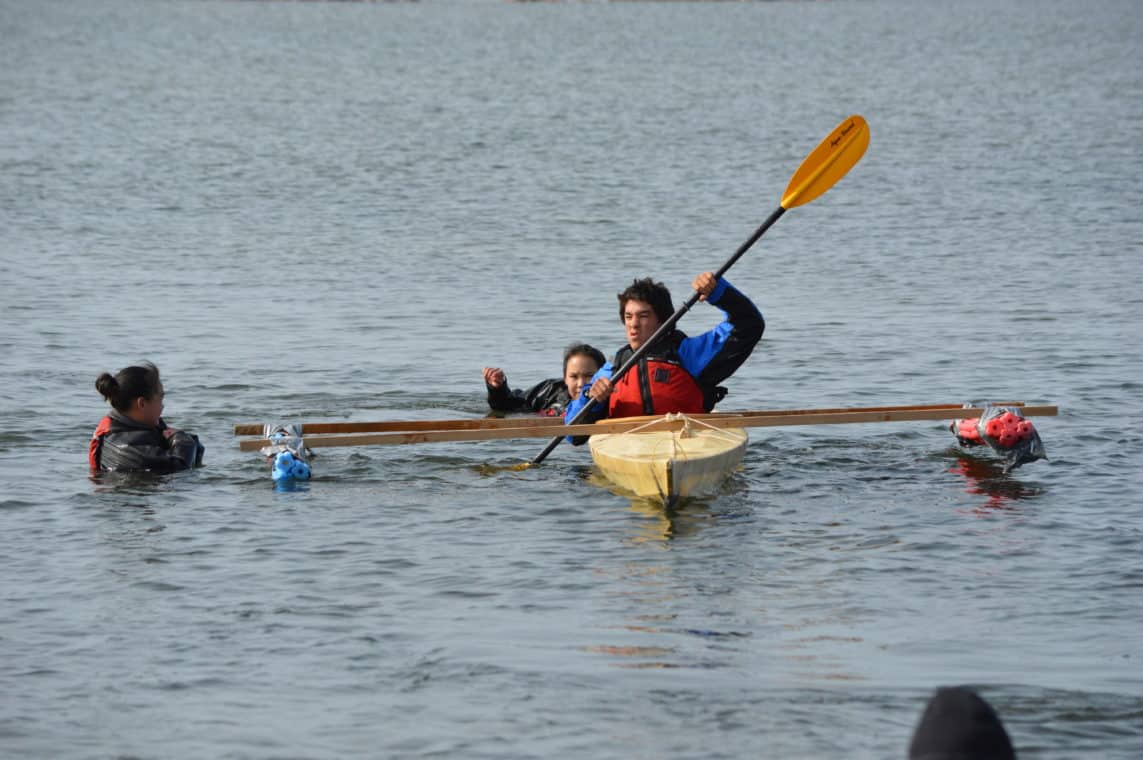
The broader community also continues to be involved. The Chesterfield Inlet Council has often gathered to watch the students out on the water in their qajaqs. The Elders watch the young people developing their handling skills, and some participate themselves. Aggark is a member of the board. Other community members remark on how proud they are of the kids and the life lessons they are learning.
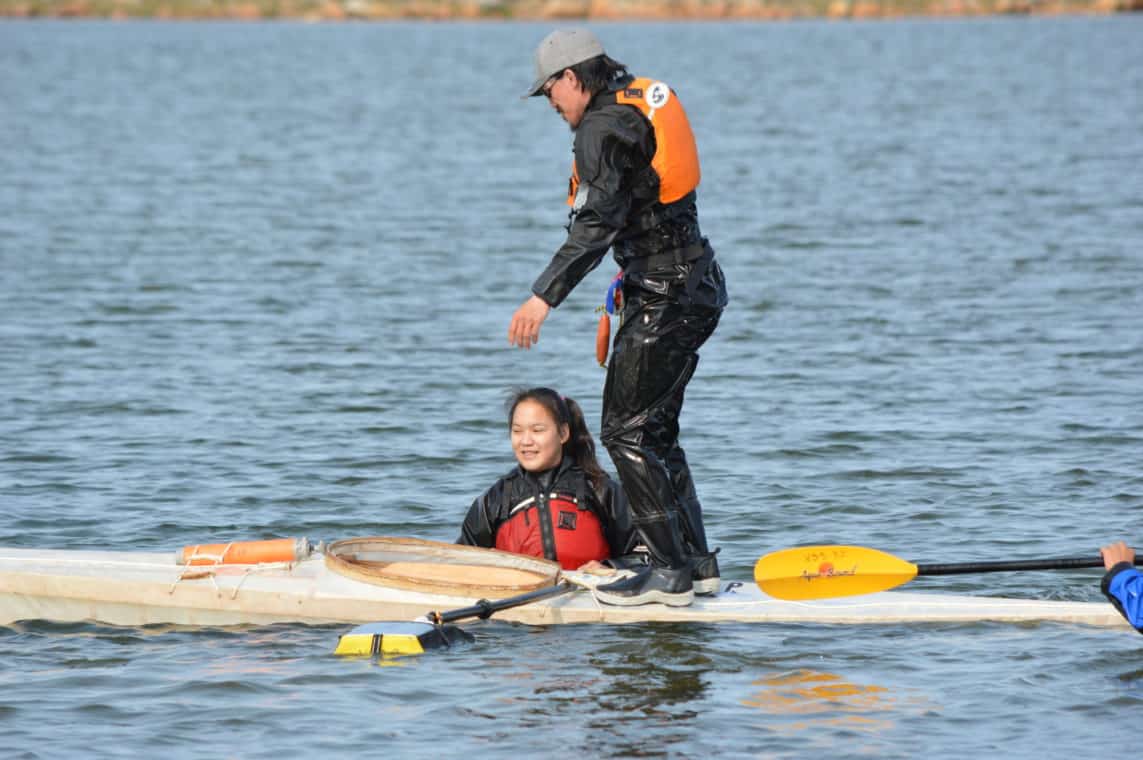
“The Arctic Inspiration Prize is unlike any other funding source I have ever encountered,” says Brocklebank. “While most other funding applications have very strict criteria, the AIP is aspirational and focused on ideas that can help the community. It is a resource that can help you realize your dream of making your community better, by bringing your ideas to life. It provides the opportunity to make the North stronger and better. You are only limited by how you limit yourself.”
Brocklebank encourages others in the North to apply for the prize. “There are so many with so many great ideas. It doesn’t matter the size of the population. This is the dream you didn’t even know you had.”
The qajaq program recently completed its 17th year of activity and is still going strong. As Brocklebank says, “We went from an amazing program that was pretty much done to a new lease on the program.”
The AIP will support the project’s work for another 10 years, which will enable them to put another 100 or so youth through the program.
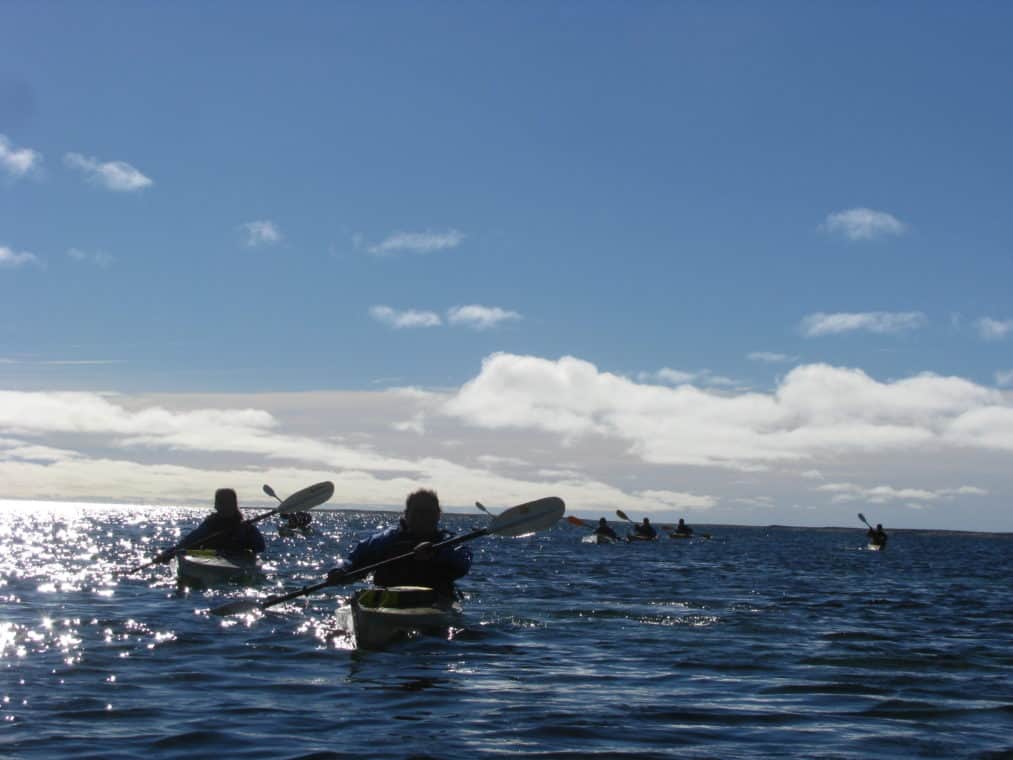
The 10th anniversary Arctic Inspiration Prize awards ceremony will be broadcast virtually. Tune in March 4 to join the celebration:
